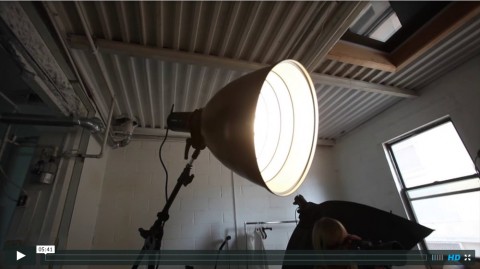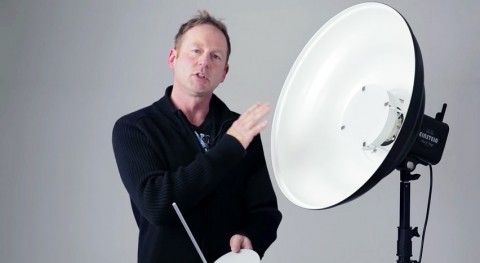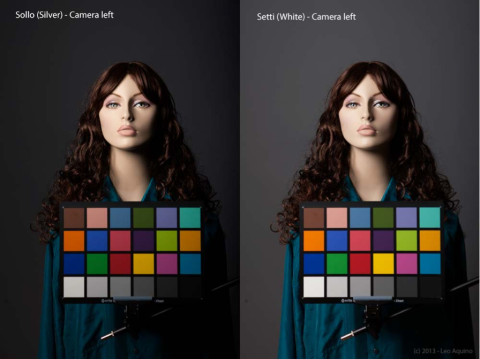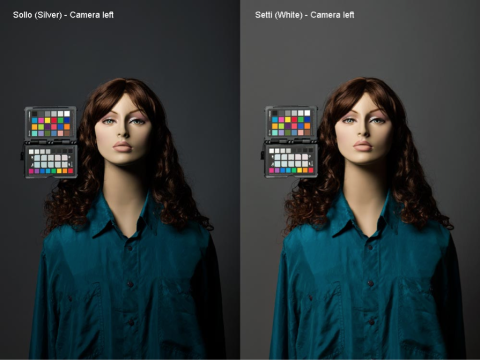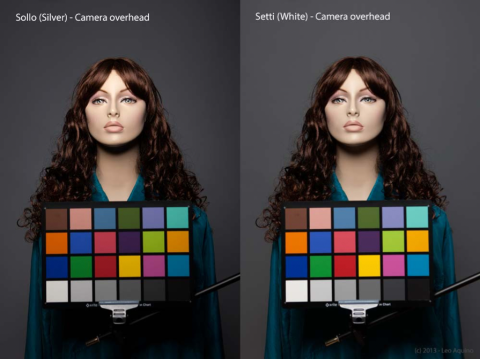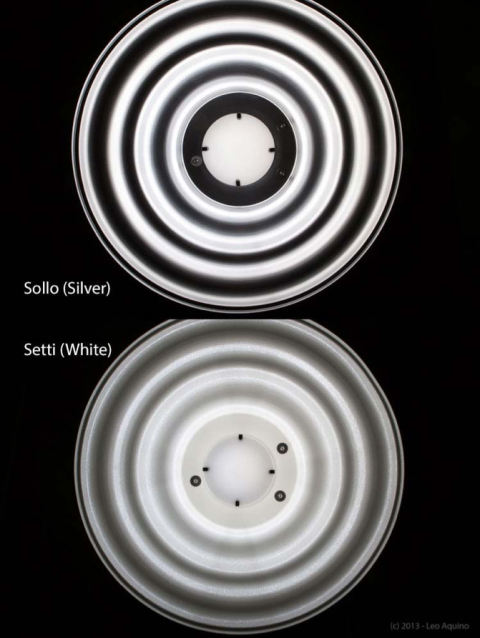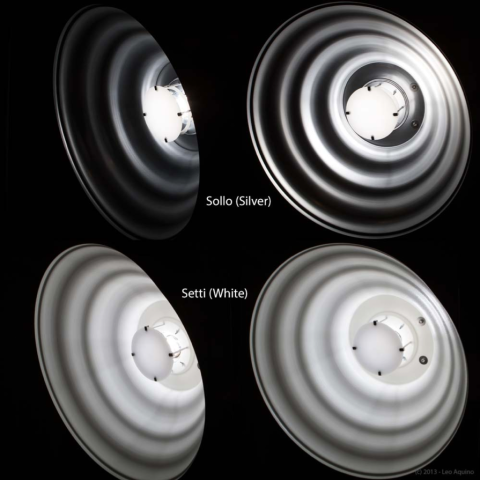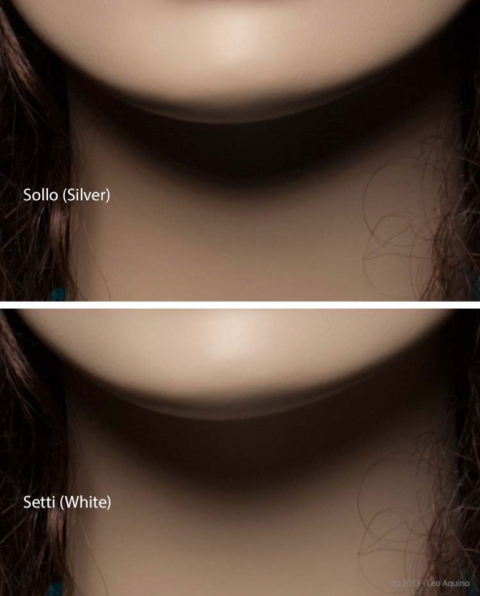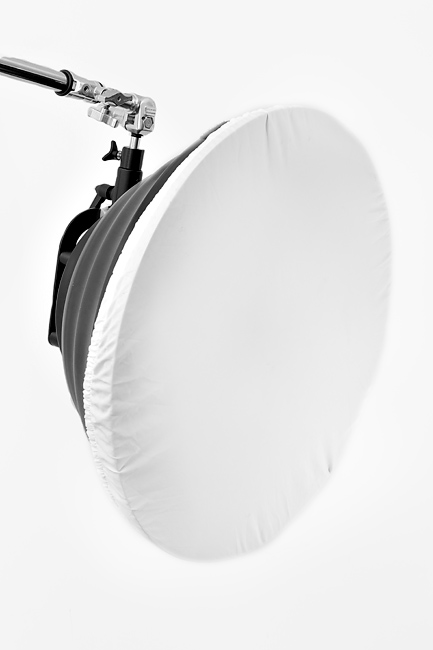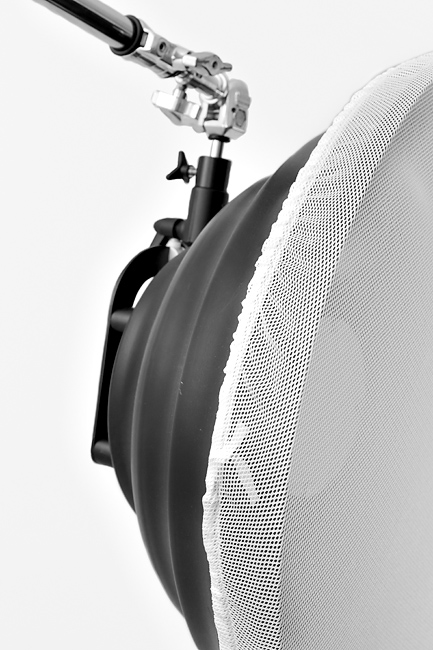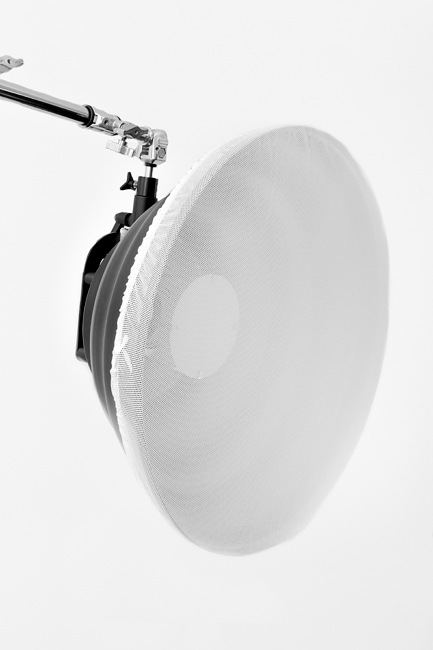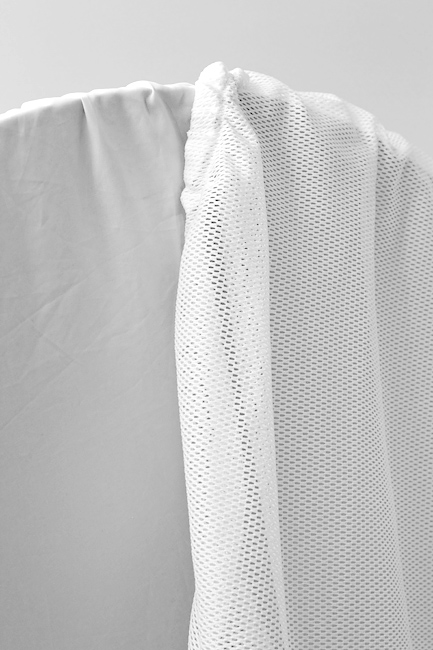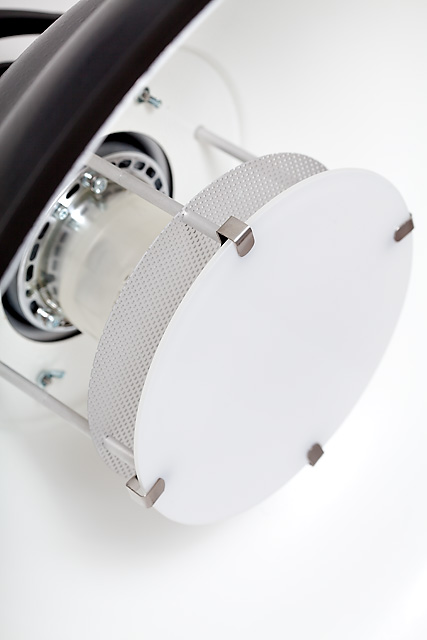
Archive for the ‘Mola Tips’ CategoryMelissa Rodwell’s informative review on Breed about the virtues of the Mola Setti and Mola Rayo. Check it out!
Tutorial – Portrait Lighting Light SetupIn this Portrait Lighting Tutorial, Craig Beckta takes you behind the scenes and reveal a 3 light edge light set up. The Main light Modifier used was a Mola Demi White 22 Beauty Dish. White or silver?The Mola Setti or Sollo – a technical look at both the Mola Setti and Sollo reflectors, their characteristics and comparison.
Mola Setti or Sollo? That’s a question that’s been asked by more than a few people, including myself, interested in using a BD. And although the question seems simple enough, the answer, unfortunately, doesn’t seem to be. Being the owner of the 28″ Mola Setti White and, more recently, the 28″ Mola Sollo Silver, I did a couple of tests with each dish with the results posted here to hopefully help you find your own answer based on your own requirements. The first test was done with the BD placed to the left of the camera and above the subject. The subject was placed 4 ft. from a gray seamless paper background. The distance between the dish and the subject was 3.5 ft. The camera settings were 1/250, f/5.6 @ ISO 100. The light used with the dishes was a Broncolor Unilite head plugged into port B of an Elinchrom Ranger RX Speed AS pack. For the Setti, the pack was set to a power level of 3.7 (color temp metered at 4700º K) to give an aperture reading of f/5.6. The Sollo being 1 stop more efficient (as advertised by Mola Softlights) only required a setting of 2.7 (color temp metered at 4970º K). Note: All sample images were color corrected using the gray box at the bottom of the Color Check chart, 3rd from the right.
As you can see, the silver Sollo provides a more contrasty light due, as we’ll see later, to the more directional characteristic of the light coming out of the Sollo. That is also the reason the background is darker with the Sollo. Another observation to note is that, although the colors of the ColorChecker lit by the white Setti seem more saturated, that really is not the case as shown by following images. The reason why the colors in the above image for the Sollo seem less saturated is because of the light fall off characteristic of the Sollo, i.e. there is less light hitting the ColorChecker. As you can see in the images below where the ColorChecker Passport is placed closer to the model’s face, the colors of both ColorChecker Passports look about the same. In the next test, the dishes were placed in front of and above the subject at a distance of 4 ft from the subject. The camera and the Ranger RX pack settings remained the same as in the previous test. As I stated earlier, the light from the silver Sollo is more directional in nature and this is easily seen by checking out the light pattern inside of each dish. This is the pattern looking straight into the face of the dishes:
The Sollo has more distinct and brighter rings of light than the Setti does but we can’t really tell if the light is really directional from this angle. But stepping aside a little, we have the following images from two different angles: Something else of interest is the shadows cast by the two dishes. The shadow (under the chin) in the following images seems to be made up of layers.
Llumm Studios & Innovafoto Mola testOur fantastic friends at Llumm Studios, Valencia Spain, recently teamed up with the Spanish Mola distributor, Innovafoto, to create a comprehensive Mola test. There intention was to recreate the same conditions for each softlight, so they could appreciate the differences that exist among the different Mola range.
Read up on the testing here – http://www.llumm.com/test-mola/ (in spanish) Below is a behind-the-scenes video of the testing process… and see the results from their test here: http://www.llumm.com/test-reflectores-mola/ (including images like that shown below, click on the issuu ‘expand’ link) click below for a bigger version… (courtesy Llumm Studios, translated by Mola) www.llumm.com
Mola tip: diffuse your MolaAnother way of softening the output of your Mola beauty dish is to use a diffusion sock. Unknown to a lot of people is that Mola actually makes 4 different types of diffusion socks for their entire range of Mola’s; (22″ – 43.5″)
Standard nylon diffuser; When you purchase a new Mola, it ships with the standard nylon diffusion sock as seen below (installed on a Mola 28″ silver Setti)
Mesh diffuser; mesh diffuser shown below…
standard nylon vs the mesh…
LW diffuser; LW-diffuser vented (HMI); Both of these LW diffusers will allow you to continue to shoot with lights that generate heat, or lights that are prone to overheat quickly and have thermal cutoffs. TIP: some shooters will double-diffuse Mola’s by installing 2 diffusion socks for an even softer, subtle fill light. Recently featured Mola user; Fiona Quinn uses this from time to time. —— The standard nylon diffuser that ships with each reflector does over time become dirty given studio or location situations. Some strobe fans drive endless amounts of air through your reflector pushing airborne dirt and dust into the diffuser.
Over time the dirt from fans or just months or years of location can take their toll on how clean your diffuser is.
Simply hand wash your nylon diffuser in a mild detergent and air dry, for tougher stains a fabric stain remover or a detergent with bleach will work well.
For taking out the wrinkles once it’s dry, just a quick spray using a spray bottle with clean water or a studio steamer will make the diffuser flat and wrinkle free.
Mola tip: stacking your diffusersWe’ve mentioned a few times on this blog about Mola users using a stacked configuration for their Mola dishes. We’ve had a few people ask what this configuration looks like and how they can setup their dish also like this. When we refer to ‘stacked diffusers’ we are referencing the installation of both the PAD and OPAL discs in a stacked, or collated configuration. Here is an image of a stacked setup on a white Mola 22″ Demi… When you buy a new Mola, all of the range (excluding the 33.5″ Beamm) ships with the PAD central diffuser – aka the Perforated Aluminium Disc. This disc looks like a swiss-cheesed metal disc. Mola also makes an optional OPAL glass diffuser (frosted glass disc) which further softens output through the centre of the dish. This gives the user flexibility for the output they are looking to create. If we stack the two diffusers, the PAD and OPAL you create an even softer centre-core of light which is favoured by shooters who either have no glass dome over their light head, or like to use the dish unsocked. Also when using HMI or continuous tungsten lighting, it further removes the brighter central hotspot. click the link below to view the instructions for setting up this configuration… Tip: Case it!Although the Mola’s are built like a ‘brick outhouse‘, there is still good reason to keep them cased, especially if you use them on-location. Here are some casing options: Versa Flex – Demi, Setti, Euro & Mantti cases The smaller dishes can often fit standard Drum cases (as in the boom boom tish drums). They are available in hardcases and your local music store might have some larger, second-hand ones lying around. Buy new from Gator cases, SKB cases etc. Larger dishes – 28″+ you’ll have to search for the marching bass drum cases. |
|
